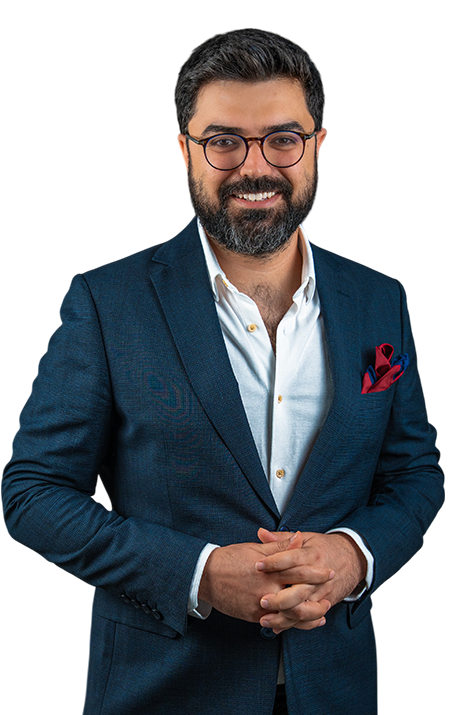What is Revision Rhinoplasty?
Revision rhinoplasty is a secondary surgical intervention performed to correct undesirable outcomes from a previous rhinoplasty procedure. This procedure aims to address both aesthetic and functional issues caused by the initial surgery. Problems such as asymmetry, depressions, protrusions, or deviations in the shape of the nose can often be resolved with this method. Additionally, structural deformities that cause breathing difficulties can also be corrected through revision surgery.
Revision rhinoplasty is technically more complex than the initial surgery because the surgeon must consider the effects of the previous intervention and create a new plan accordingly. Factors such as scar tissue, altered anatomical structures, and reduced cartilage availability can complicate the procedure. Therefore, the experience and expertise of the surgeon performing this operation are critically important.
Issues following the initial surgery typically become apparent within six months to a year, as this is how long it takes for nasal tissues to fully heal and settle into their final shape. As a result, managing patient expectations and maintaining patience are crucial.
When is Revision Rhinoplasty Necessary?
There are many different reasons why revision rhinoplasty may be required. These reasons are generally categorized into two main groups: aesthetic and functional. Patient dissatisfaction is often the primary factor leading to this procedure. Additionally, anatomical changes that develop over time may also necessitate revision.
From an aesthetic standpoint, the nose taking on an undesired shape is one of the most common reasons. Other issues that may require revision include a nasal tip that appears too thick or thin, unwanted protrusions on the nasal bridge, asymmetrical appearance, or disproportionate nose size. Revision rhinoplasty addresses each of these problems using specialized techniques.
Functional issues often include breathing difficulties, which are among the most frequently encountered problems. Changes in the internal nasal structures after the initial surgery can obstruct airflow. Conditions such as septal deviation, turbinate hypertrophy, or nasal valve collapse can make breathing difficult, negatively impacting the patient’s quality of life.
How is Revision Rhinoplasty Performed?
Revision rhinoplasty requires a more detailed planning process compared to the initial surgery. First, the surgeon reviews the patient’s previous surgical records and carefully evaluates the current nasal structure. 3D imaging technologies may be used to simulate the procedure beforehand. Aligning the patient’s expectations with the surgeon’s recommendations is also critically important.
In terms of surgical technique, either open or closed rhinoplasty methods may be used. The open technique involves a small incision on the nasal tip for better access to nasal structures, while the closed technique places all incisions inside the nostrils. Revision surgery often favors the open technique due to the broader field of view it provides.
Cartilage grafting is a common approach in revision surgeries. If too much cartilage was removed during the initial surgery, cartilage grafts may be harvested from the patient’s ear or rib to enhance structural support and achieve the desired shape. Synthetic materials may also be used in some cases. The surgery typically lasts between 2-4 hours, depending on the patient’s condition.
Risks of Revision Rhinoplasty
Like any surgical procedure, revision rhinoplasty carries certain risks, which are generally higher than those of the initial rhinoplasty due to altered anatomical structures. Scar tissue and reduced blood flow can negatively impact the healing process. Weakened cartilage and bone structures also increase risk factors.
Potential complications during surgery include excessive bleeding, infection, and adverse reactions to anesthesia. There is also a risk of septal perforation, particularly with repeated surgical interventions, which may lead to permanent breathing difficulties.
Long-term risks include asymmetry, deformities, and unsatisfactory aesthetic results. Serious complications such as tissue necrosis, permanent numbness, and loss of smell may also occur. Revision rhinoplasty may require further revisions in 5-15% of cases, making it essential to discuss all risks with the patient beforehand.
Recovery Process After Revision Rhinoplasty
The recovery process after revision rhinoplasty is typically longer and more complex than after the initial surgery due to scar tissue and altered blood flow. The first two weeks are critical, and patients must be very cautious during this period. Factors such as age, overall health, and smoking habits also play a significant role in recovery.
Swelling and bruising around the nose are common in the first few days and usually subside within 7-10 days. Splints and nasal packing are removed under the doctor’s supervision. Revision rhinoplasty patients should rest and avoid strenuous activities during the first week, as heavy lifting or bending can worsen swelling.
Patients can gradually resume daily activities after the second week, but full recovery may take 6-12 months, during which the nose gradually settles into its final shape. Patience and realistic expectations are key, and regular follow-ups with the surgeon are essential for monitoring progress.
Post-Operative Care After Revision Rhinoplasty
Proper post-operative care significantly influences the success of revision rhinoplasty. Patients must strictly follow their surgeon’s instructions regarding wound care, medication, and lifestyle adjustments. Preventing infection and achieving optimal results depend on adherence to these guidelines.
Keeping the nasal area clean and dry is crucial. Regular cleaning of the incision site and prescribed antibiotic ointments help prevent infection. Saline sprays can soften crusting inside the nose. Post-rhinoplasty care requires avoiding rubbing or applying pressure to the nose.
Sleeping with the head elevated reduces swelling, and patients should avoid sleeping on their side for the first two weeks. Sun protection and sunscreen use prevent hyperpigmentation. Avoiding smoking and alcohol speeds up healing. Warm (not hot) showers are recommended, and steam treatments should be avoided.
Cost of Revision Rhinoplasty
The cost of revision rhinoplasty is generally higher than that of the initial surgery due to its technical complexity, longer duration, and potential need for additional materials like cartilage grafts. The surgeon’s experience and the patient’s location also affect pricing.
In Turkey, as of 2025, revision rhinoplasty costs range between 90,000-180,000 TL, depending on the patient’s condition, surgical complexity, and techniques used. Additional expenses include hospital stays, anesthesia, and follow-up visits. Revision rhinoplasty patients should conduct a detailed cost analysis beforehand.
Financial planning is essential, and patients may consider savings, partial insurance coverage (for functional issues), or payment plans. Evaluating financial readiness before surgery is important.
How Long Should You Wait After the Initial Surgery?
Patients should wait at least 6-12 months after the initial surgery before considering revision rhinoplasty. This allows nasal tissues to heal fully. However, earlier intervention may be necessary for urgent functional issues, as determined by the surgeon.
Is Revision Surgery Riskier Than the Initial Surgery?
Yes, revision rhinoplasty carries higher risks than the initial surgery due to scar tissue, altered anatomy, and reduced blood flow. Choosing an experienced surgeon is critical.
How Many Revision Surgeries Can Be Performed?
There is no theoretical limit, but each revision increases risks. Tissue quality often declines significantly after 2-3 revisions, making the choice of surgeon for the initial surgery crucial.
Is There a Guarantee of Results After Revision Surgery?
No cosmetic surgery offers a 100% guarantee, but experienced surgeons achieve high success rates. Realistic expectations and thorough discussions with the surgeon are essential.

